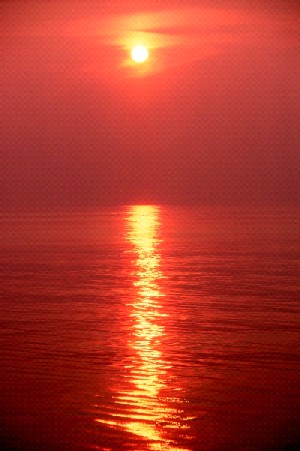Cover the plate of the overhead projector with the black cardboard and make sure the hole is in the middle. Fill the glass or beaker with water to approximately 10 cm height and place the glass over the hole. Turn off the lights in the room and draw the curtains. Turn on the projector – the light now travels through the water and up to the projector's mirror, and from there to the screen on the wall where you see a small circle of light. So far, light travels through the water without being scattered. To make your glass of water resemble the atmosphere, carefully pour a few drops of low-fat milk into the glass and let it blend into the water.
Now you will observe two things:
- The light circle on the wall becomes orange-red
- If you look at the glass of water from the side, you see a light blue color
|
 |
 |
 |
|
Photo: NOAA
|
|









